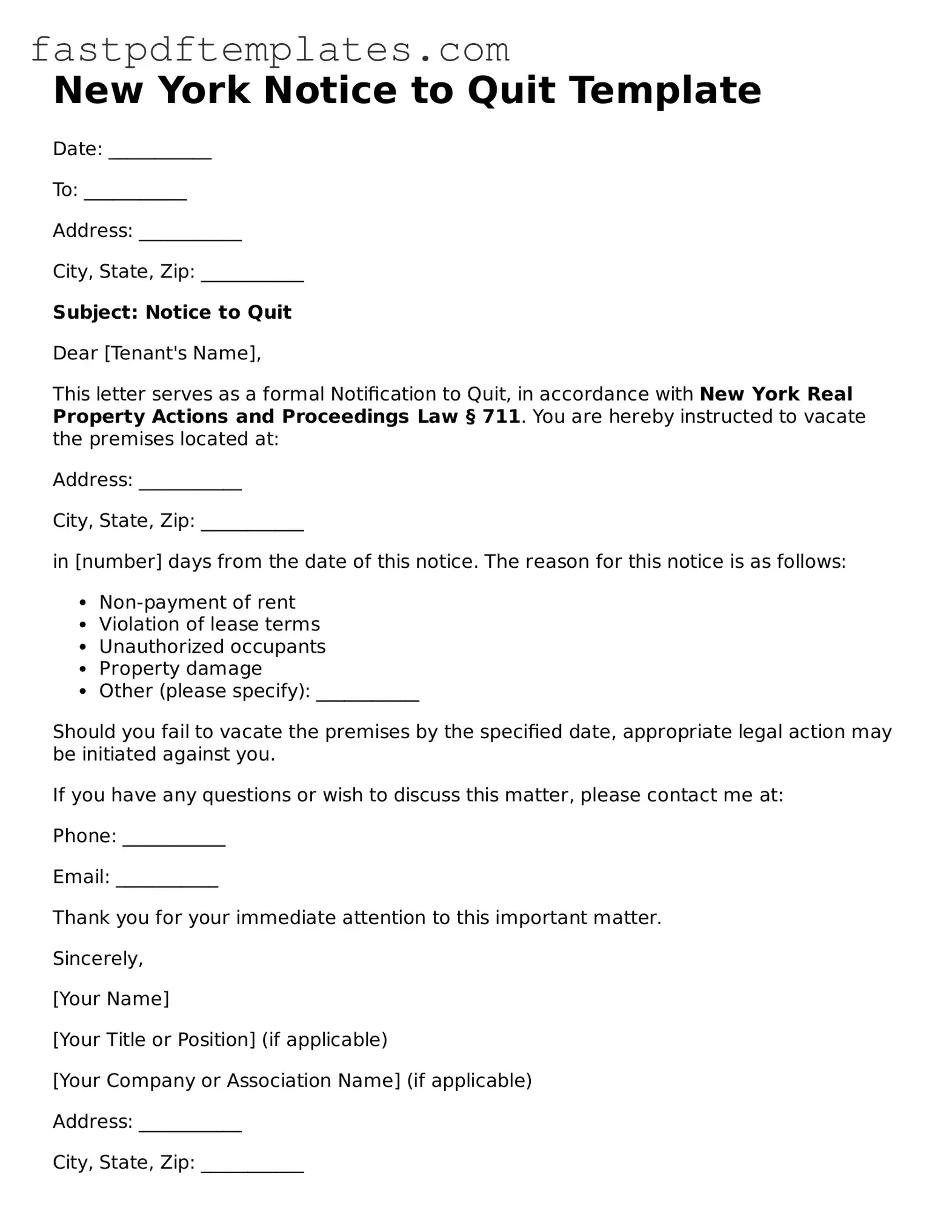New York Notice to Quit Template
Date: ___________
To: ___________
Address: ___________
City, State, Zip: ___________
Subject: Notice to Quit
Dear [Tenant's Name],
This letter serves as a formal Notification to Quit, in accordance with New York Real Property Actions and Proceedings Law § 711. You are hereby instructed to vacate the premises located at:
Address: ___________
City, State, Zip: ___________
in [number] days from the date of this notice. The reason for this notice is as follows:
- Non-payment of rent
- Violation of lease terms
- Unauthorized occupants
- Property damage
- Other (please specify): ___________
Should you fail to vacate the premises by the specified date, appropriate legal action may be initiated against you.
If you have any questions or wish to discuss this matter, please contact me at:
Phone: ___________
Email: ___________
Thank you for your immediate attention to this important matter.
Sincerely,
[Your Name]
[Your Title or Position] (if applicable)
[Your Company or Association Name] (if applicable)
Address: ___________
City, State, Zip: ___________
Phone: ___________
Email: ___________
